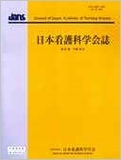Japanese
English
- 販売していません
- Abstract 文献概要
- 参考文献 Reference
要旨
目的:訪問看護による終末期がん患者への訪問時期別のアドバンスケアプランニング(Advance Care Planning;以下ACP)の実態を把握し,希望死亡場所での死亡の実現との関連を明らかにする.
方法:全国より無作為抽出した1,000事業所の訪問看護師に,受け持った終末期がん患者についての郵送式質問紙調査を実施した.調査項目は,患者の死亡場所および希望死亡場所,訪問時期別のACP(予後理解を促す支援および希望死亡場所の確認と調整)の実践,希望死亡場所での死亡実現のための関連要因とし,希望死亡場所での死亡の実現を従属変数としてロジスティック回帰分析を行った.
結果:374名を分析対象とし,65.0%は自宅死亡,73.8%の希望が実現した.
ACPのうち,生活上への支障を含めた予後の説明(以下,生活予後の説明)の実施割合は27.8〜31.8%と低く,希望死亡場所での死亡の実現には,訪問全時期を通じて希望死亡場所の確認(調整済オッズ比:95%信頼区間;訪問初期,19.92:9.48-41.87,悪化期,21.10:9.53-46.71,臨死期187.35:51.79-677.64),悪化期の生活予後の説明(2.44:1.05-5.66)が関連した.
結論:希望死亡場所での死亡の実現には,終末期を通しての繰り返しの希望の確認,症状悪化時に予後予測に基づいて生活予後の説明をすることが重要であることが示唆された.
Purpose: To examine the association between advance care planning (ACP) by a visiting nurse and achieving the desired place of death for patients with end-stage cancer.
Methods: A cross-sectional nationwide questionnaire survey was conducted for visiting nurses at 1,000 randomly selected home care agencies. Items included the actual place of death, patients' preferences for place for death, ACP (support for understanding of life expectancy and confrmation and adjustment of the chosen place of death) by nurses at each home visit, and factors related to ACP in nurses' practice. Logistic regression was conducted with achieving the desired place of death as the dependent variable.
Results: A total of 374 responses were analyzed. Regarding the place of death, 65.0% of patients died at home and 73.8% died at their chosen place. Te rate of an explanation of the prognosis, including problems likely to occur in daily life was low (27.8-31.8%). Factors related to death at the desired place included confrmation of the chosen place of death during the whole period (adjusted odds ratio: 19.92, 95% confdence interval: 9.48-41.87; 21.10, 9.53-46.71; 187.35, 51.79-677.64) and the explanation of the prognosis (2.44, 1.05-5.66) at the progression stage.
Conclusions: Tese results suggest that patients are more likely to die in their desired place if visiting nurses confrm the chosen place of death repeatedly until close to the end of life and explain the infuence of the disease prognosis on daily life, with updates of this information based on changes in symptoms.
Copyright © 2017, Japan Academy of Nursing Science. All rights reserved.


